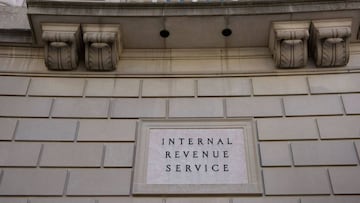Stimulus check: how to access the payment if I did not file the tax returns
Millions of Americans have still not received their first stimulus payment, and the hope is that any second round will find a solution to ensure the same is avoided.

More than 160 million people in the United States received their Economic Income Payment (EIP) quickly and smoothly. These stimulus checks, as they are commonly referred, were issued as part of the CARES Act, signed off back in March. It was decided that many vulnerable individuals and families required help to deal with the financial hardship they faced as the coronavirus pandemic took hold, however, there were another 12 million who did not receive that direct payment.
Stimulus check: access the payment with no file
The vast majority of those eligible adults received their money automatically via their bank account, but the group that missed out was, to a large degree, those people on lower incomes and who normally don't pay taxes. With their details not being held, they were required to complete a form proving the Inland Revenue Service (IRS) with a means of getting the money to them.
- Second stimulus check: on who will McConnell focus?
- Stimulus check: why blacks and Hispanics had to wait longer
- Homeschooling: what are pandemic pods and how can they help parents?
- Mnuchin says second round of $1,200 payments coming
According to a recent study by the Urban Institute, less than 60% of people at or below the federal poverty level had received their payment by the end of May, compared to almost 78% of people with higher incomes. This also pointed to an economic and structural inequality across racial lines.
The risk of this happening was known from the start, but such was the need to fire out an aid package that the subsequent problems have had to be rectified as they went along. Some have, but some clearly still have not, and we are now at a stage when a second payment is on the verge of being signed off.
**What to do if you have still not received your check**
How to reach the missing beneficiaries
Related stories
Although the IRS may not have details of all those eligible for payments, it is believed that a significant amount of the information can be sourced from state governments. According to the Centre on Budget and Policy Priorities, they are said to have data on around three quarters of those at risk of missing out thanks to their involvement in either Medicaid or SNAP.
By making good use of local governments, the new bill could incorporate many more millions of the most vulnerable people in the plan. As Elaine Maag from the Urban-Brookings Tax Policy Center said, via CNN, "I think what we're seeing right now is a huge disconnect between federal, state and local governments. But I think Congress should be more aggressive in directing efforts to find these people.”

